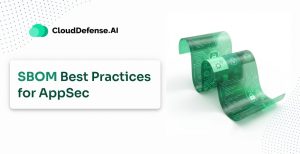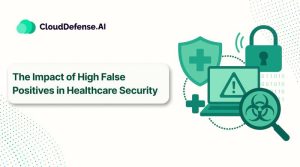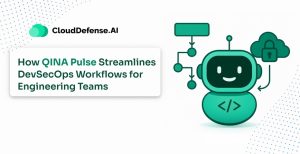The 21st century has seen rapid digitalization across industries, introducing new tech to enhance efficiency in both private and government sectors. However, this progress has also led to a rise in cybercrime, as attackers find innovative ways to breach organizational frameworks, impacting data, finances, and reputation.
This is where cybersecurity and cloud security become essential. But what’s the difference between them? Is there any rivalry? In this blog, we’ll explore their differences and how CloudDefense.AI offers solutions for both infrastructures, helping protect against modern cyber threats.
Lets get started with the Cloud Security vs. Cyber Security debate!
What Is Cloud Security?
Concerning statistics from Eurostat, cloud computing has seen a steady increase in Europe. More companies are opting to migrate to the cloud mainly due to increased productivity, ease of access, and scalability. However, the uncontrolled scalability and real-time processes create multiple vulnerabilities that call for security measures.
These security measures are often termed cloud security or cloud-based security. Cloud Security is one of the many subsets that cybersecurity has. The prime motive of this security system is to adopt a set of policies that help to protect your data, applications, and equipment that are connected to the cloud.
A cloud-based environment often runs on cloud services that are offered by third-party vendors. This makes it essential for both parties to equally contribute to efforts in creating a sound and safe cloud security system.
How Does Cloud Security Work?
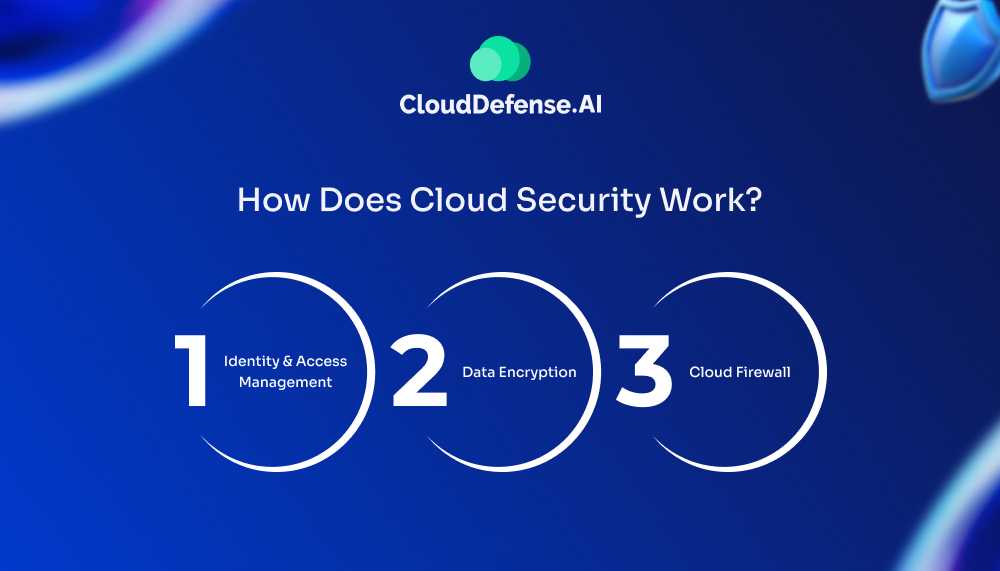
Cloud Security encompasses a set of technologies that help to ensure some level of security in the cloud computing environment.
Identity and Access Management
Identity and Access Management or IAM, is a software that helps to assess the identity of a user and decide the level of access they should be given. This is crucial in identifying authorized users and preventing the leakage of data.
IAM offers varying services such as Multi-Factor Authentication, Single Sign-on, Access Control, and Identity Providers. These services help to protect the cloud environment from insider risk and account takeover attacks.
Data Encryption
Encrypted data is data that has been scrambled to make it unreadable for unauthorized receivers. Data that is not encrypted can be exploited by an attacker and used for financial benefits. Encryption ensures that data is unusable by an unauthorized party even if they manage to intercept it.
Data Encryption can occur at two points. Firstly, the database where the data is stored, and secondly when it is in route to the receiver. For data encryption to be effective it is best to adopt both forms of encryption when dealing with data in a cloud environment.
Cloud Firewall
Ever noticed the firewall that protects our personal computers? A cloud firewall functions similarly by setting up defenses to keep malicious traffic and ransomware from entering the cloud server. Hosted in the cloud, firewalls also help to fend off DDoS attacks and prevent any vulnerabilities from getting exploited.
What Is Cyber Security?
Cyber Security focuses on providing protection for all devices, applications, and other assets that are connected by a network. Being the most widely used form of tech security, cybersecurity ensures that a certain network of devices is kept safe by preventing unauthorized access to the infrastructure.
A company that is not protected by cyber security might get targeted by attackers who use vulnerabilities in the network. These vulnerabilities can be used to insert malware, ransomware, or other malicious software and cause financial or data loss.
According to Steve Morgan, editor-in-chief of the Cybercrime Magazine, cybercrime is seeing a gradual increase of 15% every year. This astonishing data suggests that cybercrime will cumulatively cost the world a total loss of $10.5 Trillion in 2025. With rapidly increasing cyber crimes, cyber security measures have seen their fair share of growth with companies racing to secure themselves.
How Does Cyber Security Work?
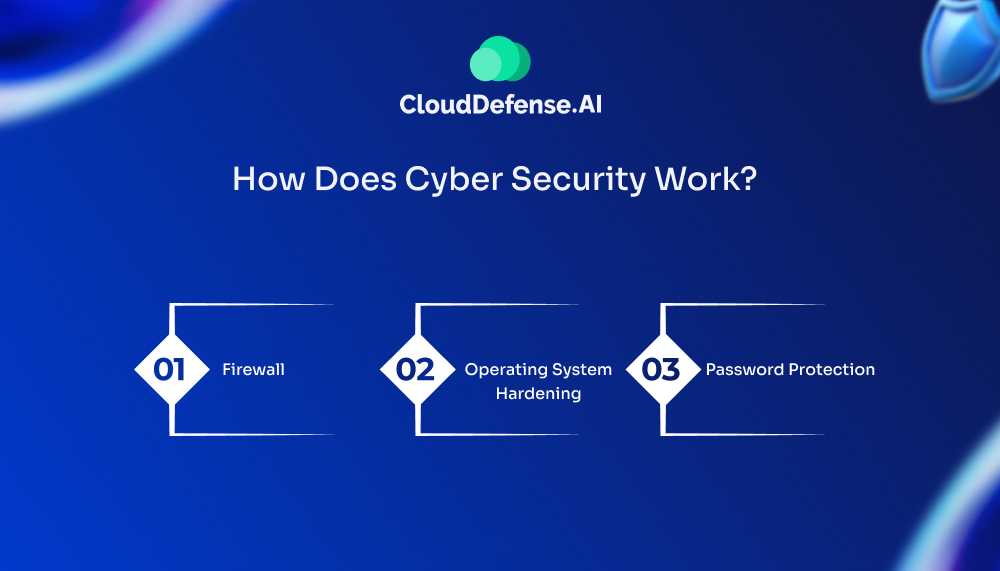
Ever noticed bouncers in clubs? They work on restricting unauthorized access to club premises and also take care of any troublemakers. Cyber Security works in a very similar way. It is a defense line that stands at the doorstep of your IT infrastructure and restricts malicious behavior from entering your system.
Cyber Security systems primarily have three goals that are set for them. They are asked to prevent any,
- Unauthorized access to the infrastructure or data centers.
- Unauthorized modification of data or other system settings that can affect the functionality of the system.
- Unauthorized deletion of data or other system settings causing permanent damage to the company.
Cyber security also uses a set of technologies that help it to efficiently deal with cyber threats.
Firewall:
Firewall is a software that plays a major role in restricting unauthorized access to a network. They actively monitor outgoing and incoming traffic and block anything that seems malicious to them. Firewalls have a set of programmed rules that they use to identify data that is malicious and can cause harm to the system.
Operating System Hardening:
Operating Systems that you get from the market have loads of functionalities that may seem redundant for your enterprise. In fact, these redundant functionalities and configurations often act as a vulnerability in cyber security that is waiting to be exploited. OS hardening works on limiting functionalities that are not needed and reconfiguring the computer system to make it more secure.
OS hardening is very useful in thwarting attacks on the system as it limits the amount of attack ground that the cyber attacker gets. A smaller ground makes it much easier to defend compared to a misconfigured computer system.
Password Protection:
Password protection is a type of access control feature that most cybersecurity systems have these days. Through this security feature, hackers and intruders are kept away from accessing a system without knowing the right password. This is the most basic and common type of protection that enterprises and individuals adopt to protect themselves.
Cloud Security vs Cyber Security – Key Differences
People often get confused between cloud security and cyber security. Though Cloud security is an offspring of cyber security, there are still a lot of key features that might contrast each other to some extent.
Area Of Protection And Responsibility:
Cloud security caters to the security needs of cloud-based environments only. On the other hand, Cyber security has a broader area that it needs to protect including multiple devices, servers, data centers, networks, or even clouds.
Cloud service providers or CSPs have a shared responsibility when it comes to protecting a cloud-based environment. However, cyber security requires the user to take steps to fortify their cyber defenses.
What They Protect:
Cybersecurity prevents cyber security threats from causing any harm to an IT asset. Cloud Security however has a smaller set of goals in terms of what jt needs to protect. It focuses on guarding data and restricting access to it to any malicious being.
When it comes to the protection of data, cyber security requires the user to adopt various security habits and measures. Such methods include setting up strong password protection and changing the password now and then.
Threat Detecting Mechanism:
Cloud network security encompasses Artificial Intelligence and Machine Learning to effectively manage threats to its environment in real time. AI and ML are both very efficient in countering cyber-attacks. Cybersecurity systems use traditional anti-virus software to detect threats and diminish them. Anti-virus software needs to be patched regularly to counter any new malicious threats.
Cloud Security vs Cyber Security – Which is better?
Can you compare the moon to the sun? You cannot. Cloud and Cyber security are very distinct from one another and help protect different equipment or infrastructure. They do not overlap each other in any way which makes it hard to determine which is better.
There certainly are a few things that might suggest a difference in their efficiency. Such as the use of AI to counter threats in real-time in cloud network security is much more efficient than what cyber security does. Though, we can say that both are important when it comes to fulfilling the needs of an enterprise.
Before adopting a cloud-based environment it is essential to have fundamental cyber security measures to secure the infrastructure. An effective all-around security solution requires a collaboration of different security measures as each caters to a different set of assets.
If you think you would need to pick one from either cloud security or cyber security then you might be entirely wrong. Your digital infrastructure or assets might actually require protection from both. A clear understanding of your company’s IT system will help you determine what security measures you would need to inherit for effective security.
Cyber Security in Cloud Computing
Anyone new to the two terms might think that cyber security and cloud computing are entirely different aspects of the digital domain. With different focuses and approaches. However, it is totally the opposite. Cyber security is critical when it comes to safeguarding the data stored in a cloud-based environment.
Shared Responsibility Between Vendor And User
Cloud computing users store their data on public clouds that are owned by cloud service providers. Cloud service providers such as AWS, Azure, and Google have their own cloud security architecture but they also require their users to adopt some cyber security strategy.
It is not the vendor’s responsibility to provide cybersecurity solutions for the user’s data, their applications, and how they choose to access the cloud services. In case of a breach from any of these points, it is the user that is held accountable.
A good example of this would be Infrastructure as a service (IaaS) providers, IaaS is a cloud-based service that gives its user a complete IT infrastructure that is hosted on a private cloud. It is an enticing deal that attracts people mainly due to it being cheap compared to building your own infrastructure.
IaaS service providers do offer cyber security measures, but only to protect the base infrastructure. Whereas, the responsibility of securing the data is on the business owners. Conditions like these have made it crucial for enterprises to buy services from various cybersecurity vendors such as CloudDefense.AI.
CloudDefense.AI – A Trusted Cloud and Cybersecurity Provider
CloudDefense.AI is a state-of-the-art Cloud Native Application Protection Platform (CNAPP) that goes beyond ensuring the security of cloud-native applications. It offers comprehensive 360-degree visibility into all aspects of your cloud environment. The platform is meticulously engineered to answer all security challenges associated with your application, data, and cloud infrastructure.
A prominent feature of CloudDefense.AI is its agentless approach. It seamlessly integrates itself with your cloud infrastructure and Kubernetes, delivering real-time reports by automating vulnerability scanning. This empowers your security team to act swiftly when any security issues arise.
Moreover, CloudDefense.AI streamlines security management by combining various security tools and features into a single unified solution. This makes it highly efficient and effective when handling multi-cloud environments.
CloudDefense.AI utilizes real-time Artificial intelligence to detect threats and counter them. This can turn out to be a game-changer for you as the platform vigilantly monitors behavioral indicators and employs programmable automation to safeguard your system from any threats.
Other than fortifying your cyber security posture, CloudDefense.AI is a developer-friendly platform that encourages collaborations between DevOps, Operations, and Security teams through popular channels such as Slack, Jira, and Webhooks. This allows users to efficiently develop applications while also maintaining robust security measures.
FAQ
Check out some of the queries that you might have regarding cloud security vs cyber security.
Is Cyber Security the same as Cloud Security?
Cyber security is an umbrella term that may hold different security measures to secure various IT domains, networks, and equipment. Cloud security focuses on securing cloud-based environments and applications and therefore is a subset of cyber security.
How can I ensure my data is secure in the cloud?
When it comes to storing data on the cloud, the Cloud Service Provider holds zero accountability towards the security of your data. A number of best practices can be followed to ensure data security in the cloud from your end.
- Choosing a Cloud service provider that is reliable.
- Using multi-factor authentication.
- Encrypting data in both rest and transit.
- Always monitoring activity on the cloud.
- Staying updated with security reports.
- Taking the help of CNAPP platforms, such as CloudDefense.AI
What is IoT cybersecurity?
IoT cyber security focuses on the best practices and equipment that are catered to protect devices and networks connected to the Internet of Things (IoT), IoT devices may include cameras connected to the Internet, smart refrigerators, and wifi-connected automobiles. These ‘Things’ are the most vulnerable and often may lead to easy access to the network connected to them.
What are the security risks of cloud computing?
Cloud computing is efficient and offers unlimited scalability for businesses but this also turns out to be a huge security drawback. Cloud services run in real-time and threats need to be dealt with in real-time as well. A single misconfiguration or human error might result in the whole cloud environment getting jeopardized.
The biggest risk to a cloud environment is the breach of data. An unprotected cloud makes it easy for attackers to steal data. These data can be used by them to sell on the Dark web for financial gains or to damage the company’s reputation.
Conclusion
The rapid growth of IT infrastructures has also resulted in new opportunities for cyber attackers to exploit. Government agencies, corporations, and individuals around the world are opting for security measures to protect their cyberspace from threat actors. A rapid growth in cloud-based computing or services and a rise in cyber threats have called for a different approach to how companies choose to tackle them.
When it comes to Cloud security vs Cyber security we hope you might already know what all the key differences are. It is also crucial for you to remember that there is no duel between these two security features and it is more of a partnership between these two to achieve the greater good.

